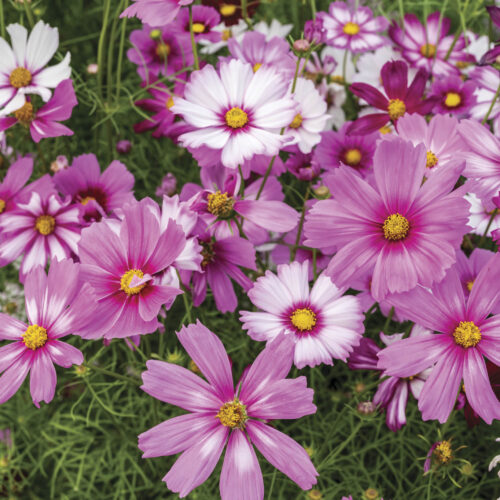Edible ornamentals
2016-12-14T04:52:05+11:00
Good looking and tasty. Could we call these edimentals? PENNY WOODWARD investigates.
Many gardeners think of edible plants as ones that need to be stuck in the back of the garden out of sight, because while they may be delicious they’re not particularly ornamental. I, however, beg to differ. I find all edible plants beautiful to look at and love the different leaf colours of lettuces, and purples and blue-greys found in the brassica family for instance. But there are also edible plants that are genuinely ornamental, even to the most dedicated flower grower. We could perhaps call these edimentals? The following is a tasty handful of some of these edible ornamentals.
Day lilies (Hemerocallis species) are tough perennial bulbous plants with flowers that range in colour through all shades of yellows, reds and purples. Their name comes from the fact that each flower opens and lasts for only one day. All parts of the plant are edible, but the flowers are especially delightful. Pick only buds or newly opened flowers – texture and quality deteriorates rapidly once the flower is open. The petals have a deliciously fragrant, earthy flavour and are unexpectedly crunchy to eat. I love them in salads, but they can also be steamed or stir-fried with other vegetables, or dipped in a light batter and fried tempura style. For more information go to this article.
Globe artichokes (Cynara scolymus) are striking plants that are both beautiful and useful. The arching, soft grey-green leaves and huge, vibrant-purple thistle flowers make a dramatic statement and add structure and contrast to foliage. Always pick flower buds before they begin to open, with a few centimetres of stem attached. I love the very young and tender buds so I begin harvesting quite early. If you forget to harvest, the flowers attract beneficial insects to the garden.
Pineapple sage (Salvia elegans) has flowers that are more sweet than savoury, and this combined with the jewel-like red colour means they look and taste good in both salads and desserts. Pineapple sage grows as a large perennial bush that needs a reasonable amount of water during dry weather and is frost tender but is otherwise easy to grow. The cultivar ‘Honey Melon’ has deeper red flowers. The leaves too are edible with a fruity flavour.
Yacon (Polymnia edulis) is similar to, but not as invasive as, Jerusalem artichokes. Plants produce elongated brown-skinned, crisp-textured edible tubers that can weigh up to 500g. Planted in spring, yacons grow with a central stem reaching around 2m in height and in autumn, golden daisy flowers appear. Tubers are harvested in autumn and winter, but dig as required because tubers tend to soften once harvested.
Tuberous nasturtiums, also known as mashua (Trapoleum tuberosum), will thrive in almost any soil, growing quickly and often out-competing weeds. The lumpy, cone-shaped edible tubers can be white, yellow, red or purple, and sweetly delicious to eat. Plants are strongly pest resistant and in South America are traditionally intercropped with other plants. Flowers are typically nasturtium and are bright orangey red.
Dianthus (Dianthus species) flowers are picked fresh and then the petals pulled from the flower heads. Sprinkle fresh petals into or over vegetable and fruit salads, as well as soups and cold drinks. They are also frozen into ice cubes and added to your favourite drink, or stirred into desserts such as fruit jellies, ice cream, cakes and custard. Petals can be made into syrups and cordials or infused in vinegars or wine. Once dried, petals can also be added to sugar to sweetly scent it. These beautiful flowers, in the carnation family, are certainly both edible and ornamental.
All parts of elephant garlic, also commonly called Russian garlic, are edible including the bulb, cloves, flowers, flower stems and leaves. In some regions it’s found naturalised on old house sites and is a welcome, or sometimes unwelcome, inhabitant of many suburban gardens – but it is not garlic. So what is it? Its botanical name Allium ampeloprasum (Ampeloprasum Group) shows that it’s more closely related to leeks than true garlic (Allium sativum). But this plant has much to recommend it. It is hardy and easy to grow, it looks dramatic with curling scapes and huge beneficial insect-attracting flowers, and has a multitude of uses in the kitchen. Elephant garlic may not be garlic but it deserves a place in the garden and kitchen.







